Physical Address
304 North Cardinal St.
Dorchester Center, MA 02124
Physical Address
304 North Cardinal St.
Dorchester Center, MA 02124
The best wireless gaming headsets offer excellent sound quality and dependable voice chat features without the annoyance of cables. Whether you’re looking to immerse yourself in surround sound while gaming on a TV in your living room, or need a bit more privacy in a dorm room, a good wireless gaming headset can enhance any console or PC setup.
Even non-gamers can benefit, thanks to new features like simultaneous Bluetooth and 2.4GHz connections, which simplify multitasking between two devices. Budget-friendly options like the Wyze Wireless Gaming Headset can last over 20 hours on a single charge, while high-end headsets like our top choice, the Arctis Nova Pro Wireless, offer active noise cancellation and a dedicated control hub.
We’ve compiled a list of the five best wireless gaming headsets currently available, including several over-ear models and even a wireless earbud option. All of our selections have been assessed based on the same testing factors, which include audio quality, connectivity, and overall value.
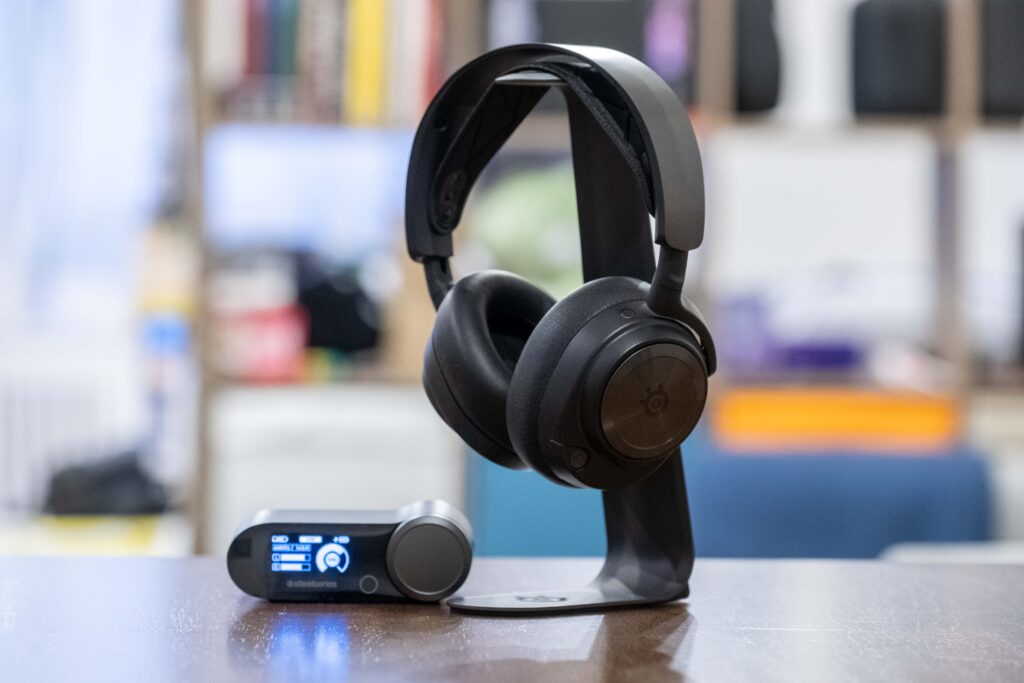
Pros
Cons
The SteelSeries Arctis Nova Pro Wireless is a gaming headset that you would want and need. It’s mainly for PC gaming, but it has many features that make it a great headset for other uses too. It has 40mm drivers designed by SteelSeries that are hi-fi capable. These drivers have a wireless frequency response of 10 – 22,000 Hz and a wired frequency response of 10 – 40,000 Hz. The headset is lightweight and can be adjusted to fit comfortably for long hours.
The Arctis Nova Pro comes with a wireless base station. This station can connect to two audio sources like a PC and a console through dual USB-C ports. You can use the base station to switch between systems or adjust audio settings. It’s like a fancy 2.4GHz wireless dongle for two systems. The base station also charges the headset’s batteries. The headset comes with two batteries, each can last 18 – 22 hours. The batteries can be swapped while the headset is in use, so you can have unlimited battery life if you’re near the base station.
The Arctis Nova Pro is made for gaming, but it can also be used as a lifestyle headset. It has a fully-retractable bidirectional microphone, active noise cancellation, and can connect to 2.4GHz wireless and Bluetooth at the same time. It costs $349.99, which isn’t cheap, but it’s worth it. If you’re looking for a cheaper option, SteelSeries has the Arctis Nova line. This line has the same design as the Arctis Nova Pro, including the retractable mic. It includes the wireless Arctis Nova 7 ($179.99) and the wired Arctis Nova 1 ($59.99).
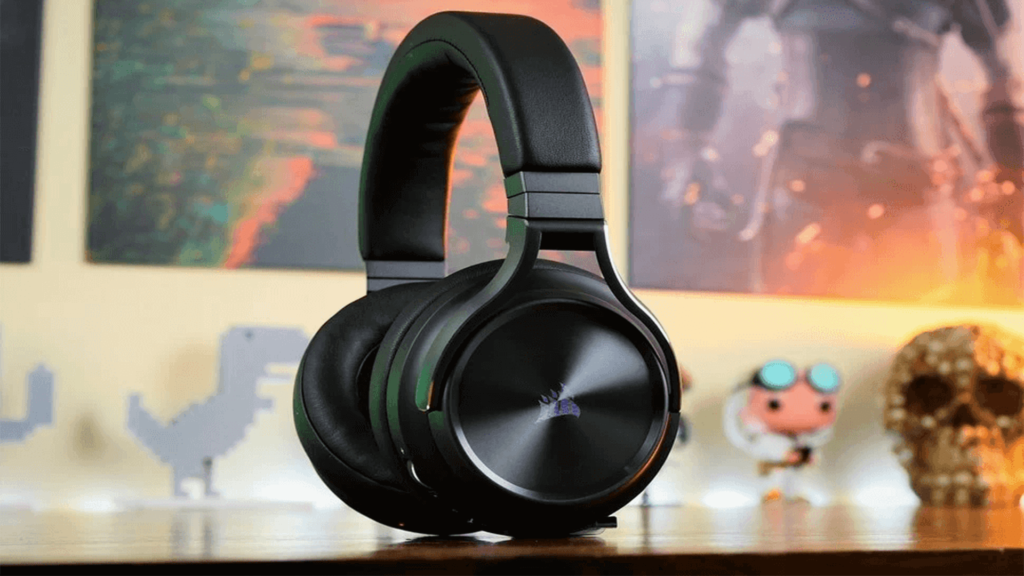
Pros
Cons
Three editors at Top 5 Reviews use either the Corsair Virtuoso RGB Wireless XT or the 2.4GHz-only Virtuoso RGB Wireless SE as their main headsets. The Virtuoso RGB Wireless XT has similar specs to the Arctis Nova Pro. It can connect to 2.4GHz wireless and Bluetooth at the same time, has hi-fi capable 50mm drivers, and is built comfortably and with high quality. It’s sold for $270, but you can often find it for around $200.
The Virtuoso RGB Wireless XT has 50mm dynamic drivers with a frequency response of 20 – 40,000 Hz. This is much wider than the average gaming headset, which usually only covers the “human hearing” standard of 20 – 20,000 Hz. It has round over-ear earcups with a light aluminum finish, and a padded headband covered in leatherette that matches the earpads. It comes with a removable omnidirectional microphone. This isn’t as convenient as the retractable mic from SteelSeries, but it’s good enough for those who want to use the headset as headphones without a permanently attached visible microphone.
The battery of the Virtuoso RGB Wireless XT lasts only 15 hours when connected to two devices. This means you’ll probably need to charge it every day. This shouldn’t be a big problem if you’re only using the headset at your PC, but there are better options if you’re traveling. If you don’t need Bluetooth, the Corsair Virtuoso RGB Wireless SE has the same features, except for Bluetooth.
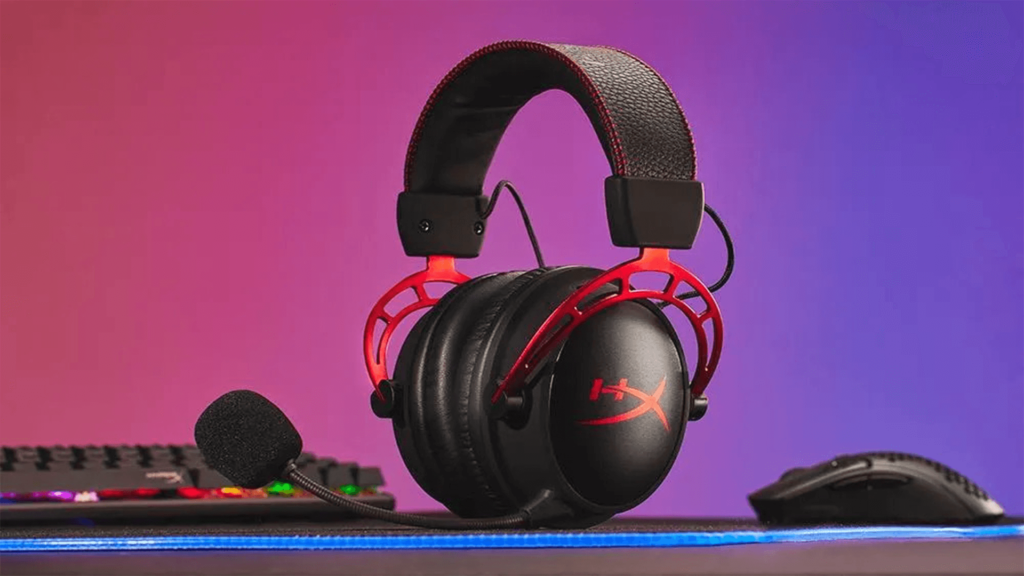
Pros
Cons
The HyperX Cloud III Wireless could be the most comfy wireless headset we’ve ever put on — it’s just as comfy as its wired version (the HyperX Cloud III). The Cloud III Wireless is an over-ear headset with a cushioned, leatherette-covered headband and soft, leatherette-covered ear cushions. It has a weight of 11.64oz (330g), which is similar to the Arctis Nova Pro’s weight.
The Cloud III Wireless has the same 53mm dynamic drivers as the Cloud II Wireless, but they’ve been reworked and angled for a superior audio experience. The drivers have a frequency response of 10 – 21,000 Hz, which is a bit wider than the typical gaming headset but not as wide as the Arctis Nova Pro or the Virtuoso RGB Wireless XT. It comes with a detachable 10mm boom mic, which has a built-in pop filter and a red mute indicator light.
The headset boasts an impressive 120 hours of battery life, which is more than almost any wireless gaming headset you’ll come across (except for the HyperX Cloud Alpha Wireless, which gets a staggering 300+ hours). The downside is that this headset only offers one connection option, which is 2.4GHz wireless — no analog/wired connection, no Bluetooth, nada. In other words, it’s a fantastic headset as long as you only plan on using it with one device.
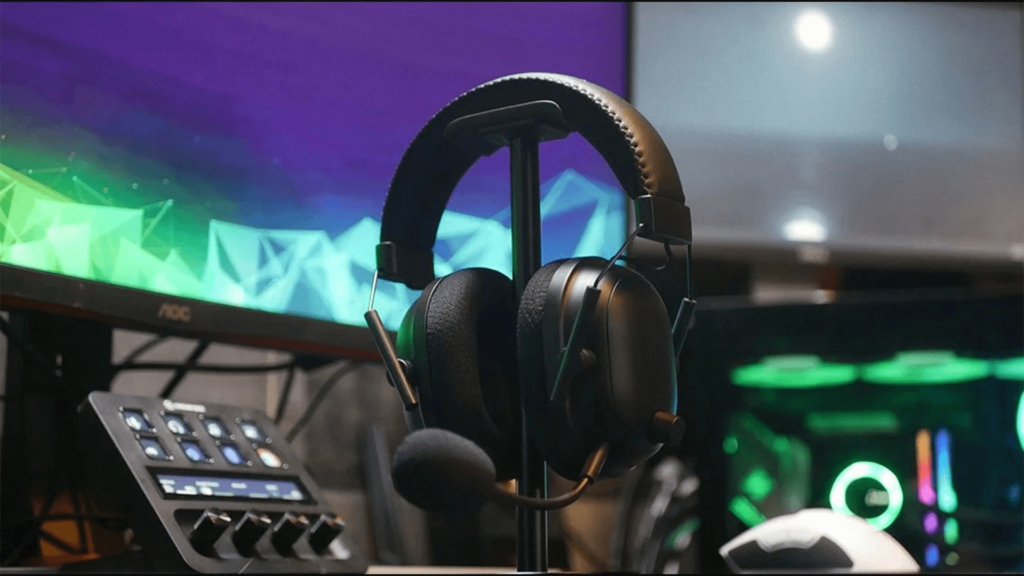
Pros
Cons
The HyperX Cloud III Wireless could be the comfiest wireless headset we’ve ever tried. It’s just as comfy as the wired version, the HyperX Cloud III. The Cloud III Wireless is a headset that goes over your ears. It has a headband and earpads covered in soft, padded leatherette. It weighs 11.64oz (330g), which is about the same as the Arctis Nova Pro.
The Cloud III Wireless has 53mm dynamic drivers, just like the Cloud II Wireless. But they’ve been changed and angled to make the sound better. The drivers can pick up sounds from 10 – 21,000 Hz. That’s a bit more than most gaming headsets, but not as much as the Arctis Nova Pro or the Virtuoso RGB Wireless XT. It has a 10mm microphone that you can take off. The microphone has a pop filter inside and a red light to show when it’s muted.
The headset can last for an amazing 120 hours before it needs charging. That’s longer than almost any other wireless gaming headset (except for the HyperX Cloud Alpha Wireless, which can last for over 300 hours). The only downside is that this headset can only connect using 2.4GHz wireless. It doesn’t have a wired connection or Bluetooth. So, it’s a great headset if you’re only going to use it with one device.
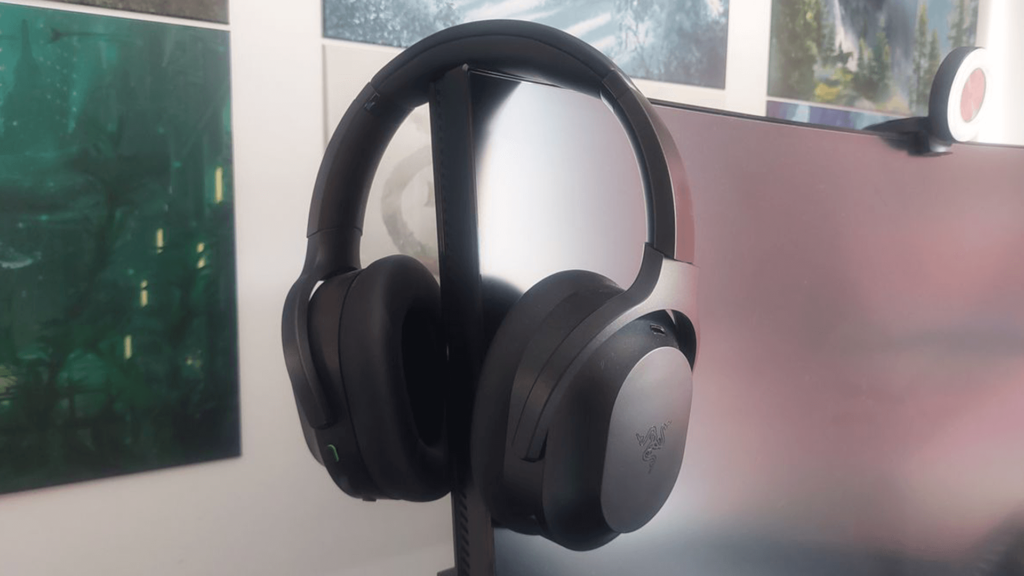
Pros
Cons
The Razer Barracuda Pro Wireless headset looks more like a lifestyle product from Sony or Bose than a gaming accessory from Razer. It has a surprisingly subtle all-black design (for Razer), built-in beamforming microphones, and a sturdy travel case. This makes the Barracuda Pro Wireless a good choice for anyone looking for a headset that can serve multiple purposes.
The Barracuda Pro Wireless is comfortable and light, with a simple all-plastic design. It uses Razer’s own 50mm dynamic drivers, which have a frequency response range of 20 – 20,000 Hz, and a pair of integrated beamforming noise-canceling microphones in the ear cups. While these aren’t the best microphones we’ve seen in a headset, they do a decent job of capturing your voice and reducing background noise — they should be adequate for most gamers.
In terms of lifestyle features, the Barracuda Pro Wireless offers three levels of active noise cancellation and up to 40 hours of battery life. It supports both 2.4GHz wireless and Bluetooth connectivity, but it doesn’t blend audio from multiple sources (like the Arctis Nova Pro and Virtuoso RGB Wireless XT do) — instead, you’ll have to switch between sources using a dedicated “SmartSwitch” button on the right ear cup.
The main downside to the Barracuda Pro Wireless is its somewhat less-than-luxurious build — the plastic looks a bit cheap and tends to show fingerprints. However, it’s quite light, weighing in at 11.99 ounces (340g), and it comes with a nice, sturdy travel case.
To find the best wireless gaming headsets, we look at several important areas, including how good the sound is, how well it’s made, what features it has, how it connects, and if it’s good value for money. Here’s how we check each area.
Audio performance: This is the most important thing for a gaming headset, whether it’s wireless or not. We check both how good the sound is when you’re listening, and how good the microphone is when you’re talking, with different tests for each.
We play lots of different games on PC, PlayStation, Xbox, and Switch to check how good the sound is, and we also listen to music and watch movies. We check how clear the sound is and if it’s balanced; we also test special features like surround sound here.
We check microphones using the voice chat in games, chat apps like Discord and Zoom, and regular phone calls if we can. We also record voices to see how clear they sound and how well the microphone blocks out background noise.
Build quality: We check what materials were used, if the headset feels strong enough to last for lots of gaming, if it can be stored easily, and if it’s safe to take with you when you travel. Features like a microphone that can be taken off or pushed out of the way can make a headset score higher in this area too.
We also think about what the headset looks like, and other features like special lights or ear cups and bands that can be changed.
Features and connectivity: Connecting a wireless headset can be as simple as plugging in a USB dongle, but we also check things like how far away you can be, if there’s any delay in the sound, and how quickly the headset connects.
We also look at any extra software that comes with the headset, which you often need to change things like the EQ, virtual surround sound, noise-cancellation, and lights. Features like being able to connect to Bluetooth at the same time can also make a headset score higher in this area, and being able to use the headset with lots of different platforms can also make it score higher. Value: While you can spend over $300 on a really good wireless gaming headset, we know that most gamers don’t want to spend that much. We decide if a headset is good value by comparing its price to what features it has and how well it performs. For example, a cheaper headset that has a top feature like being able to connect to Bluetooth at the same time is better value than a more expensive headset with lights but no Bluetooth.
Wireless gaming headsets are usually more user-friendly than wired ones. However, some gamers who play competitively might prefer wired headsets to avoid issues with connection or sound delay. For most players, it’s hard to notice any potential sound delay from the wireless connection without testing.
Technically, wired headsets could provide better sound quality when playing from high-quality sources. But, 2.4GHz wireless signals can deliver enough bandwidth to play most formats without needing extra compression.
If you’re a PlayStation or Xbox player, you could choose to connect a wired headset to a wireless controller. This can give a similar experience to a wireless headset but at a lower price. Still, we suggest investing in a proper gaming headset instead of regular headphones.
For more information on this topic, you can check out our full comparison of wired vs. wireless headsets. You can also find our top recommendation for a wired headset in our guide to the best gaming headsets.
Most wireless gaming headsets use a 2.4GHz wireless signal, not the more common Bluetooth signal used by other wireless devices. Using 2.4GHz wireless usually needs a USB dongle, but it improves sound quality, audio delay, and wireless range compared to Bluetooth.
Bluetooth is still compatible with more devices. So, many of the best wireless gaming headsets have added multi-source wireless features that let you use 2.4GHz and Bluetooth at the same time.
PlayStation 5 and Xbox Series X/S consoles don’t support Bluetooth audio connections. So, 2.4GHz wireless is the only option for those platforms. Xbox has its own specific type of 2.4GHz wireless signal that must be licensed for use. The Nintendo Switch supports Bluetooth headphones as well as PlayStation-compatible headsets.
Xbox and PlayStation have different requirements for wireless headsets. But, PlayStation and Switch headsets are usually cross-compatible. Xbox wireless devices must be licensed by Microsoft and are marked with a special seal that says “Designed for Xbox.”
Wireless headsets will generally work on any computer, including Apple devices. But, some related software might not be available for macOS.
For headset recommendations for specific systems, check out our guides to the best Xbox headsets and the best PS5 headsets.
While older gaming headsets used multiple drivers to create surround sound effects, the most common forms of surround sound today are now handled by audio software instead of the headset’s hardware. Spatial audio software separates game sound into distinct audio objects so the listener gets a 3D effect. This could be from the PS5’s Tempest 3D audio, Microsoft’s Windows Sonic, or Apple’s Spatial Audio. Some spatial audio software must be licensed by the user, like DTS:X and Dolby Atmos. But, certain headsets also include a license.